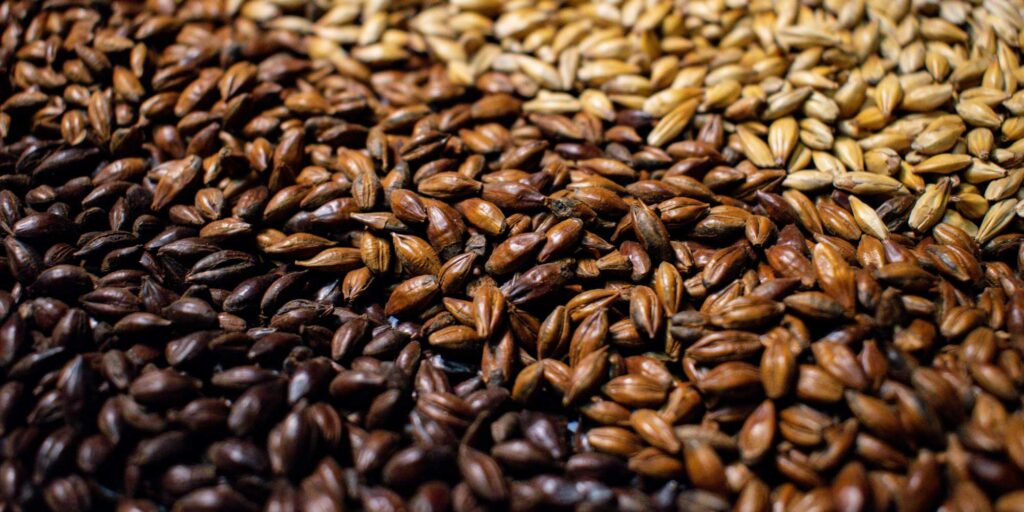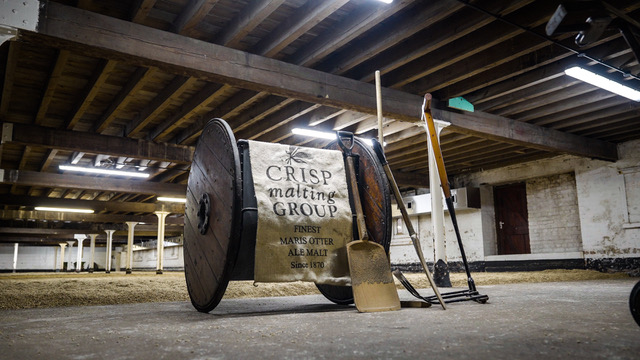
We featured the challenges we faced last year in the Malt Harvest Report and impact for 2022 Malt Pricing. The challenge is real regarding the costs of malting barley. Geterbrewed wants to be clear and transparent on the challenges that are ahead in 2023. Malt Prices for 2023 need an honest explanation.
There has been a huge impact with the commencement of the Russia-Ukraine War on 21st February 2022. We featured a Blog Post, Malting Barley Supply – The impact of the Russia / Ukraine War. This has affected the availability of malted barley at a level never experienced before.
The Harvest in the UK has been incredibly good. Geterbrewed is grateful for our long-standing relationships with our distribution partners as demand for malting barley out stripes availability. We have secured volumes of malt from our distribution partners. Ensuring we have a consistently high-quality product & availability to ensure consistent supply to our valued customers. We want to cover the factors affecting price so you can see transparency and integrity in the explanation.
So what is affecting Malt Prices for 2023?
GEB took a trip to visit some of the farmers and malt merchants who have been growing malting barley for generations to hear their challenges and look at the Price of Malting Barley.
Farmers are facing inflationary challenges, our interview covered the challenges over the last year.
Fertiliser – The prices have been shocking with the global energy crisis and demand higher than availability, compounded by Brexit and the effects of the covid pandemic, and the conflict in Ukraine has really exasperated it. Russia was the world’s biggest exporter of synthetic fertiliser, and the volatility in wholesale energy means it’s unlikely the inflated fertiliser costs will come down anytime soon.
Fuel – Farmers have been affected by the increase in fuel
The weather has had an impact on the global malting barley supply. Higher temperatures in the UK caused the harvest to have to commence a few weeks earlier than normal. European farmers had a mixed selection of successes and failures, with some regions having excellent harvests, like Denmark, and others having severe problems with lack of rainfall and soaring temperatures, like France. Australia has been affected negatively due to weather. The difference between growing feed barley vs malting barley vs other crops is affecting prices and continues to be of significant concern.
Labour Shortages – sizeable labour shortages as a result of Brexit
We need to support our farmers to continue to grow malting barley and not to move to more profitable easier-to-grow products, and to save our heritage malt varieties.
Barley Intake
The sourcing & intake of high-quality barley is pivotal to producing a high-quality malt. Low Nitrogen malt ensures brewers are getting a good extract. If you have seen our Crisp Malt Maltings Tour you can see the quality and attention to detail & the Behind the scenes at Dingemans Malting where they produce beautiful malt that delivers a sensory experience.
Check out the interview with the Crisp Malt team on how the malt is secured annually and bought at harvest and brought into their care and facilities so they can ensure the quality is protected. You can see from the wheat future index that there has been sizeable increases throughout the year and barley trading at hundreds of pounds per tonne more than it was. The general feedback is that the harvest in the UK & Ireland has been good. I feel it necessary to highlight it’s a global market for malt pricing now and affects across the globe.
Our YouTube interview goes into detail about how Crisp secures barley to ensure consistent and regular supply. If we look at the Price of Malting Barley today, it highlights the input costs before we move on to Processing that into the finished product.
The Malting Process – How is Barley Malted?
Our recent Youtube feature on Malt Prices for 2023 gives a quick overview of the process. The imagery captures the scale of energy required. Energy is used to get the barley to the maltings and continues throughout the process. Malt is dried before being put into storage. This requires energy, and then the malt moves onto the steeping stage, germination stage and kilning. All these processes use significant amounts of energy. The wholesale energy crisis has driven production costs to levels never experienced before. The increases our distribution partners are seeing are increases to the scale of 10’s of millions in energy costs alone.
Check out the data below, showing the considerable wholesale energy costs spikes.
If you’re interested in using traditional methods for malting as opposed to modern convention malting systems, check out our video What happens during the floor malting process

The Quality of Finished Product
We recently discussed in the lab the Specification of Crisp Malt & Dingemans Malts, showing the impressive skills and strength of the Technical teams. We do this to highlight the quality & support available. Check out the video we did How To Read a Malt Certificate of Analysis if you need assistance in analysing the spec of a malt certificate of analysis. We strongly encourage you to look at the Malt Certificate of Analysis when looking at a Malt Supply :
Soluble Nitrogen
The nitrogen (protein) that has been broken down in the malting process. Soluble nitrogen will aid head retention, provide yeast nutrition and add body & mouthfeel to the beer.
Soluble Nitrogen Ratio (SRN)
The total to soluble nitrogen ratio gives a very good indication of malt modification. We are looking for 38-42 for ale malt.
Friability
A measure of how easily the malt will mill. It is also a good measure of the extent of cell wall modification of the barley. A minimum of 85% is expected. If Friability changes, then you may need to adjust your milling regime.
Diastatic Power
A measure of some of the starch degrading enzyme activity in the grain: the higher the DP, the greater the conversion rate from starch to fermentable sugar. A minimum figure of 40 IoB is expected for base malts. A higher DP may benefit conversion if you’re using high amounts of adjuncts in your grist.
Moisture
This measures the water. A higher kilned malt will have lower moisture. The typical maximum is 3.5% for pale ale and 4.5% for extra pale malts.
Total Nitrogen
Dry Basis is an important measure of the nitrogen (protein) in the grain. The higher the protein, the lower the extract and vice versa. High protein will cause issues with clarity and fermentation. Ale malt should be around 1.35%-1.55% and up to 1.75% for lager malt.
Extract – As Is
This is the amount of soluble material within the malt. The IoB method mashes the grain for 60 min at 65 degrees, so it strongly approximates the infusion method of brewing. The EBC mashing method uses a stepped temperature programme, so it is more representative of a typical continental mashing process. This is the extracted value used in calculations in the brewhouse.
Extract – Dry Basis
This extract expression takes into account the moisture content of the malt and allows direct comparison of extract between different malts. Base Malts typically have a minimum 305 L/kg extract dry basis.
The Short term & Medium to Long Term Impact
If we look at what factors need to happen to bring the cost back down. Attention draws to the energy crisis as the main contributing problem currently. The quicker that settles, the quicker the malt price will settle. We assure you that if energy changes dramatically, savings will be passed on to the brewers. If the Ukraine-Russia war stopped, how long would it likely take to see farming resume in those areas? This is a challenging topic as so many variables can affect it. We don’t know how badly the farming community has been impacted, and grain movements are still proving to be difficult.
We feel that the outlook is that this will take some time to resume normal, and we are happy to discuss the benefits of looking at a Long Term Agreement. The impact haulage is having is also of note. Geterbrewed have strong relationships with hauliers who we support loyally, and we are working together to find solutions, but it’s costing significantly more now to move malt to our distribution centres in Randalstown & Dundalk.
Brexit has made it more expensive for us to process orders with the extra staff and admin required. Though we have benefitted from the impact, we still have free trading with the EU due to the NI Protocol. We will look at each case with a tailored approach to suit the needs of our customers.We are very personable with our customers, highly value your custom, and will actively look at possible solutions to minimise the impact on your business.
Cost-Saving Options for Brewers & Support Available
We genuinely acknowledge the challenges brewers will face and empathise with the situation. As an independent family business with a team, we are acutely aware of how much of an impact this will have on your business. We want to support where possible, and our sales teams will be having discussions looking at each account on a personal level.
Looking at possible substitution scenarios if brewers want to look at savings, for e.g. German Pilsen vs British Lager
What we will be doing to help with malt prices for 2023: Exploring LTA’s to offset impact and spread risk. Quick turnaround time on orders. Ensuring consistent supply. Ease of ordering in smaller quantities. Technical Support. Letters of explanation to help provide understanding to your customers
How We helped with malting barley prices in 2022
Taking into account the challenges in 2022 malt supply, we made a concerted effort to help our customers to the best of our ability.
- We gave a fixed price and honoured it throughout the year.
- This included double-downed on efficiency savings.
- Worked on a reduced margin to take a long-term view as we had just started to come out of the effects of the covid pandemic.
- Promoted Irish Craft Beer & featuring our brewery customers to provide marketing support.
- We sourced a diverse range of products to allow brewers to be creative.
- Maintaining the quality and ensuring we delivered the best extract paired with exquisite flavours & aromas.
- We have shown flexibility on credit and dispatched orders promptly in a quantity that suited the brewer’s needs.
- We have access to the best technical brewing support and have helped find efficiency savings in many breweries.
- This allows them to exceed targets and make savings using premium malts.
Talk to us about malt pricing
The cost of malting barley in 2023
We have taken the step to announce pricing pressures first with full transparency, we haven’t waited to see what the competition has done, and we genuinely acknowledge the challenges and look forward to building a solid relationship as we work through this as a team.
I wanted the feature from Geterbrewed to Educate & Justify Incoming increases & show transparency and integrity in our approach.
Geterbrewed helped our customers grow and navigate those challenges in years gone by, and we are confident we will be able to navigate the challenges of malt prices for 2023 and continue to invest in our customers.
We accept price increases are never easy to accept. I hope this explains the market forces on malt prices for 2023. Geterbrewed genuinely thank you for your understanding and will do everything within our capabilities to help you.
Why has the price of Barley increased?
Some further reading is available on the Crisp Malt Blog – Harvest Report 2022